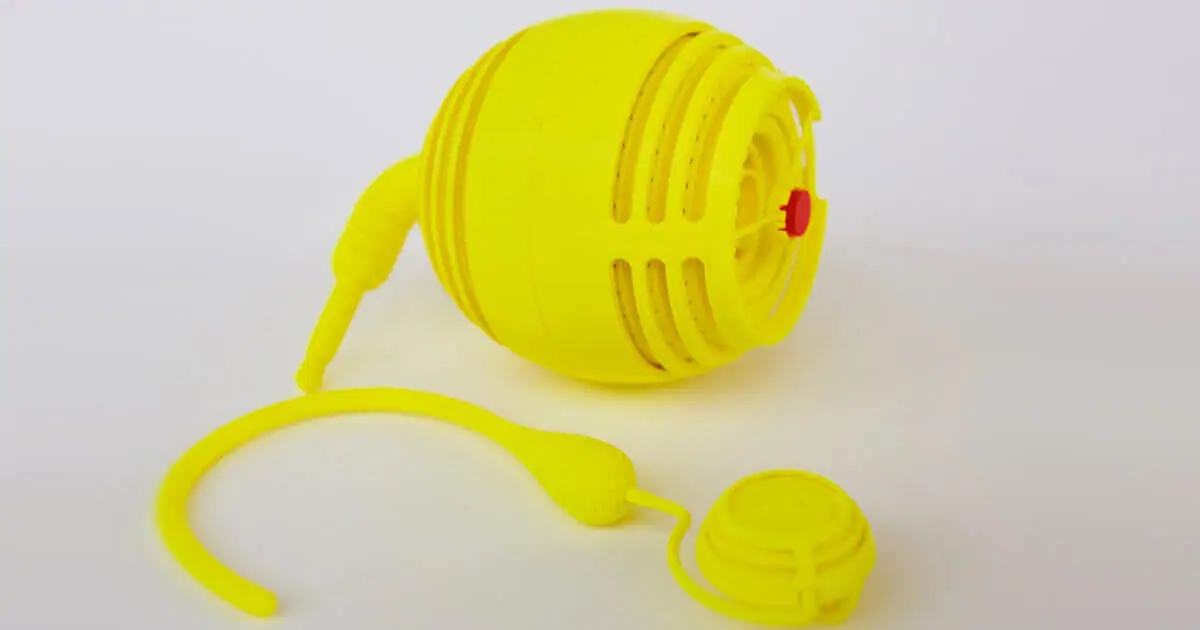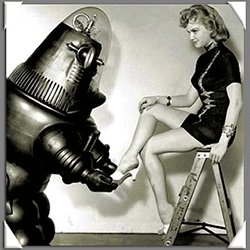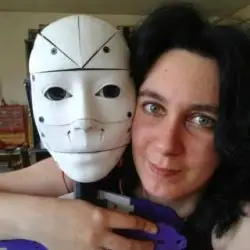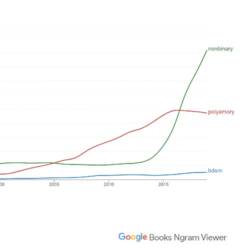Looking for Love: Affection Detector Could Take Guesswork Out of Dating
Would you use a device that read your date’s emotions?

It’s been recently reported that a device will soon be available that will finally be able to answer the age-old question: “do they really like me?”
Named for the android-detector in Philip K. Dick’s science-fiction novel Do Androids Dream Of Electric Sheep (1968)—that subsequently became Ridley Scott’s 1982 film Blade Runner—this new Voight-Kampff machine would, instead of telling humans from replicants, be fitted to a smartphone and measure a subject’s pupil dilation, heart rate, and so forth to detect affection—and desire.
The thing is, though, the device actually doesn’t exist. At least not yet.
A design fiction
Put forth by a team of designers at Lancaster University in the United Kingdom, this new Voight-Kampff is design fiction: “speculative design which heralds what might come about in the future world of human computer interaction,” explained Professor Paul Coulton in a press release.
Presented by Coulton at the CHI Conference (“the top conference for Human-Computer Interaction”) in San Jose, the device was a speculation on a possible future where “detecting empathy will become a major component of future communications.”
Even though Coulton’s technology is only a thought experiment, many have expressed a great deal of interest in it.
“This machine looks and feels very real,” Coulson added, “and has even prompted a film-making company in the States to request filming us manufacturing the device.”
“Is this the kind of world we actually want?”—Professor Paul Coulton
Even though it was created to encourage discussion about the ramifications of technology that can read human emotions, it’s remarkably easy to understand Coulson’s concerns about the proposed technology even without the use of a Voight-Kampff machine.
“What we are doing is questioning whether it has a place in our society— what kind of uses they have and what the world would actually be like with them. We want people to think about the ethical implications of what we do. Technically a lot of this is possible but is it actually what we want?” Coulson asked.
The answer is yes—for some
Yet what Professor Coulson, and others like him, don’t seem to take into account is that while there’s much to be cautious about in regards to the development of a real Voight-Kampff machine, there are many whose lives could be tremendously improved by having the ability to read human emotions.

For many on the autism spectrum a frown, a smile, a laugh, and narrowed eyes are completely cryptic. Every encounter with another person is a struggle for meaning.
But with a device like Coulson’s imaginary Voight-Kampff machine, they’d be able to look at someone and be told if their actions have caused everything from irritation to affection.
This may sound minor to you but to those with difficulty reading expressions it could mean an immeasurably improved way of relating to the world.
As Pat Crissey put it on the Autism Asperger’s Digest site:
“Without an understanding of nonverbal signals, which includes facial expressions, effective communication is simply not possible. Research has shown that only 7% of emotional meaning is conveyed through the actual words we speak, while the remaining 93% is communicated through nonverbal means, with 55% through facial expression, body language and gestures and 38% through tone of voice.”
Possibility of love
For others, and not just those on the autism spectrum, a Voight-Kampff could also mean the possibility of a new stage in human sexuality.
We’ve all been there: “do they want to?” “what do I do now?”—the myriad doubts and fears that come up when we begin the sexual dance. While an emotion-reading machine should never replace good old-fashioned talking, it could hopefully smooth over many rough edges and lead to deeper communication.
Think of it this way: with a means of being able to read arousal, or just affection, people who have difficulties in asking for what they want sex-wise simply won’t have to—ask that is. The device could read not just that they are interested in but, perhaps via eye-tracking software, what they want.
Much of this will arrive with augmented reality innovations: glasses and contact lenses allowing users to receive all kinds of information about their sexual partners: state of arousal, happiness, lack of interest, over-stimulation, aches and pains—everything that anyone should know to have a mutually pleasurable time.
Worry solves nothing
Should we be cautious about the future of emotion-reading technology? Of course, in the same way it’s a good idea to think through any new innovation.
But should we give in to worry? Absolutely not. To close a door completely because a new development might be a negative and not a positive is, at the very least, short-sighted and at the most a hinderance to those whose lives could be made all the better for it.
A true Voight-Kampff is still some years off. To some that might be too soon—for others it’s not soon enough.
All we can do is hope that we will allow it to arrive—and not give in to concern at the cost of many people’s happiness.
Image sources: Lancaster University, Holly Lay
Leave a reply
You must be logged in to post a comment.

















